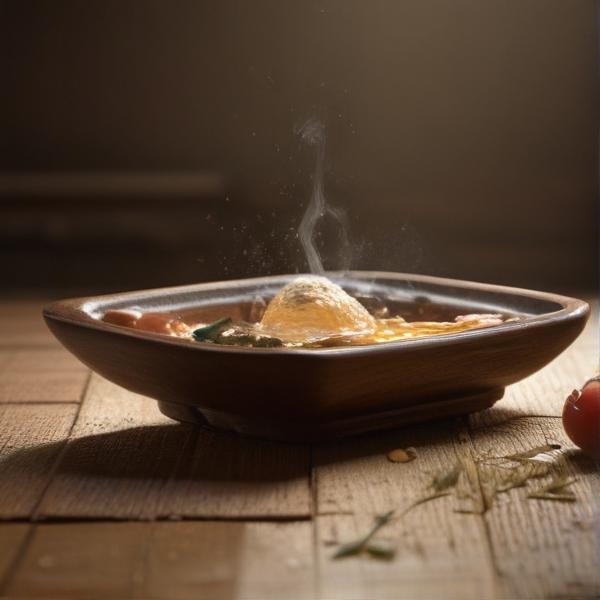基本信息 (Basic Information)
含义与用法 (Meanings & Usage)
中文核心释义 (Core Chinese Meaning): 点火使燃烧;引申为激发、热血沸腾。
英文核心释义 (Core English Meaning): to burn; ignite; figuratively, to inspire or excite passionately.
象形意义 / 为何这么写 (Pictographic Meaning / Writing Rationale)
文言文释义 (Classical Chinese Meaning)
与现代意义相近,主要指点燃、燃烧。Similar to modern meaning; mainly refers to burning or igniting.
深入学习 (In-depth Study)
字源故事 (Origin Story)
字形演变 (Character Evolution)
常用词语和例句 (Common Words & Examples)
燃烧 (to burn; combustion)
木头在火中燃烧。
Eng: The wood burns in the fire.
点燃 (to ignite; to light)
他用火柴点燃了蜡烛。
Eng: He lit the candle with a match.
激情燃烧 (passion burns; burning with passion)
青春是激情燃烧的岁月。
Eng: Youth is the age when passion burns.
相关成语 (Related Idioms)
相关成语信息待补充。Related idiom information pending.
多语言翻译 (核心释义) (Translations (Core Meaning))
- French: brûler, enflammer
- German: brennen, entflammen
- Spanish: arder, encender
- Italian: bruciare, accendere
- Portuguese: queimar, acender
- Russian: гореть, зажигать
- Arabic: يشتعل، يشعل
- Persian: سوختن، افروختن
- Dutch: branden, aansteken
- Polish: palić się, zapalać
- Vietnamese: cháy, đốt cháy
- Ukrainian: горіти, запалювати
视频学习资源 (Video Learning Resources)
通过以下链接在热门视频网站搜索 "燃" 的更多讲解:
Search for more explanations of "燃" on popular video sites:
- 在 Bilibili.com 搜索 "燃 字源 说文解字" (Search on Bilibili)
- 在 YouTube.com 搜索 "燃 character origin etymology" (Search on YouTube)
网络参考 (Web References for "燃") ()
网络内容摘要 (Web Content Summary):
“燃”字核心含义与起源:“燃” 的本义是燃烧,指物体因遇火而开始冒烟发光,有火焰。这是一个会意字,左边是“火”(表示与火相关),右边“然”表示燃烧的状态。Core meaning & origin: The character “燃” means “to burn” or “to ignite”—when something catches fire and produces flame, smoke, or heat. It’s a compound ideogram: the “火” (fire) radical indicates its connection to fire, while the right side, “然,” reinforces the sense of burning.
- 现代用法: 传统上,“燃”多用于描述燃烧、起火等现象,如“燃气”、“燃料”。但在现代流行语中,特别是动漫和音乐领域,“燃”还表示让人热血沸腾、激情高涨的感觉。例如“燃曲”指让人兴奋、振奋的歌曲,类似于“劲爆”。Modern Uses: Traditionally, “燃” describes burning or things catching fire, as in “燃气” (gas) or “燃料” (fuel). In pop culture, especially in anime or music fandoms, it also means “exciting,” “passionate,” or “inspiring”—the feeling of being fired up. For example, “燃曲” means an exciting, powerful song.
- 易混淆点: “燃”和“然”容易混淆,但“燃”专指与燃烧有关。“劲”、“爆”等词语在兴奋、激烈的语境中可与“燃”类比,但具体用法不同。Common confusions: “燃” is sometimes confused with “然,” but “燃” specifically refers to burning. Words like “劲” (exciting) and “爆” (explosive) are similar in energetic contexts but have distinct uses.
- 相关常用词: 燃烧(to burn)、燃气(gas for burning)、燃料(fuel)、点燃(to ignite)。Common words/phrases: “燃烧” (to burn), “燃气” (gas), “燃料” (fuel), “点燃” (ignite).
暂无相关的著名成语。No well-known idioms are commonly associated with “燃”.
总结:“燃”既是一个与火有关的常用字,在现代语境下也代表让人充满激情和活力的感觉,非常适合用在描述激动人心的场面或情绪。Summary: “燃” refers to burning or fire, but in modern slang, it also expresses excitement and passion—useful for describing thrilling or inspiring moments.
燃(汉语文字)_百度百科
动漫中:在萌之前产生的词,能让人亢奋的意思。燃曲,就是那些听起来能让人亢奋、燃烧起来的曲子。另外,在汉语中,"劲"字,也有此意;如,劲歌:使人兴奋的歌曲;劲爆:气氛热烈。
汉字"火"的起源、演变过程-汉字字源辞典
汉字字源辞典收录7747条汉字词条,基本涵盖了常见汉字的字源解析,是汉字研究的必备工具。 ... 灾 炙 煎 熬 炮 烙 灸 熨 炊 䶴 烘 焕 烬 尞 燎 煽 烁 熄 熹 煦 煔 熌 烄 堇 熯 煞 黥 黜 炳 然 燃 焚 烧 烤 熔 炼 烰 剡 焘 爆 炸 燬 熇 炀 煅 焠 焊 焗 熛 炟 熠 炤 燿 耀 ...
更多图片 (燃 More Images) ()
